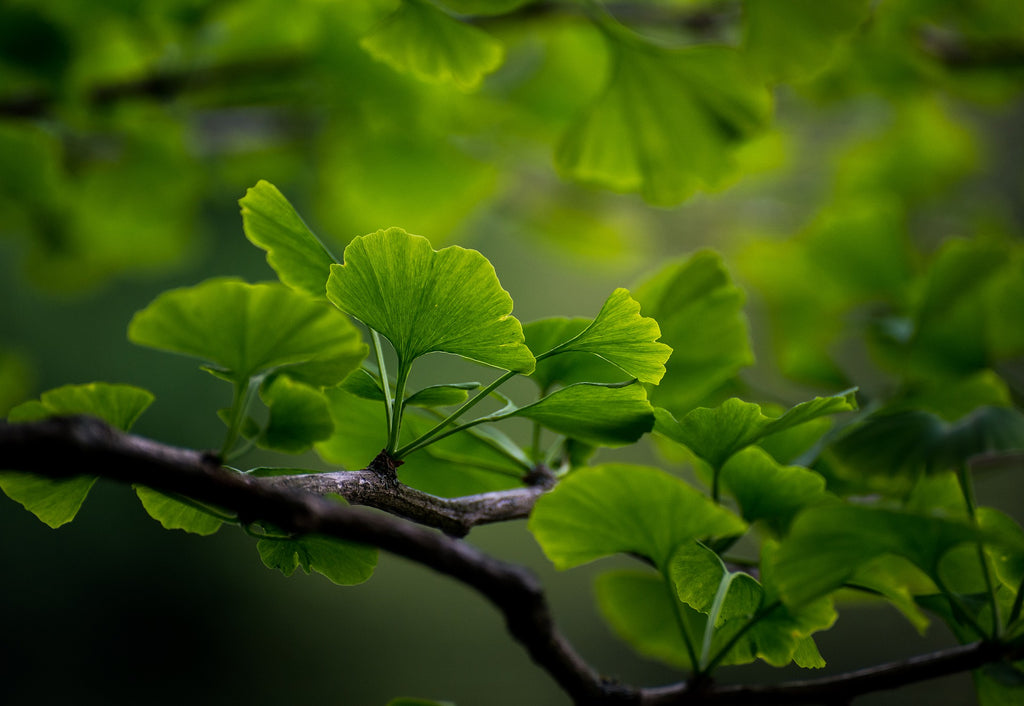A newer addition to our ingredients repertoire happens to be one of the oldest living plants - the Ginkgo Biloba tree. Because it existed in prehistoric times, the tree is considered to be a living fossil. There is record of the tree being used and cultivated early in human history and throughout time it has been a commonly planted tree. Trees have been found that are thought to be thousands of years old!
In ancient times, it was found all around the world, but at some point, about 2 million years ago, the range of the tree shrank to China. Once thought to have gone extinct in the wild, it’s been found in two areas in China. It is believed that the trees in one of those areas were planted and thus preserved by monks over a period of a few thousand years. Because of it’s sacred connection to Buddhism and Confucianism, it has become naturalized in Korea and Japan.
European travelers to Japan in the 1600’s, returned to Europe with specimens and the tree began to expand its territory. It is a resilient tree with a deep root structure and a broad canopy. In every area it grows it is resistant to diseases and insects. The ginkgo is grown as an ornamental in most parts of the world.
The leaves are most commonly used to create an extract, but the seeds also have high concentrations of powerful antioxidants polyphenols and flavonoids. Antioxidant relieve oxidative stress wherever they are applied which improves the cellular health.
Use of the Ginkgo for skin conditions was recorded in 1560, in a compendium of plants and their medical uses written by Li Shizen. The entry for ginkgo describes Ginkgo’s benefits for chapped skin, itchiness and several other skin conditions. Modern research has confirmed the fact that Ginkgo is high in anti-inflammatory ingredients and in several antioxidants.
 Image by chulmin park from Pixabay
Image by chulmin park from Pixabay
In some preliminary studies, ginkgo has been found to increase blood flow which many people use to promote the health of the scalp and some go so far as to say that it aids in preventing hair loss. We won’t claim that our White Tea & Vitamins Replenishing Shampoo with ginkgo will increase the volume and thickness of your hair, but in this blend of botanical ingredients ginkgo will certainly bring its antioxidant powers to promote the health of your scalp.
 Image by yang fan from Pixabay
Image by yang fan from Pixabay
One story I particularly like that illustrates the deep resilience of the Ginkgo tree dates from the end World War II. In 1945 there were 6 Ginkgo trees growing between ½ -1 ¼ mile from the Hiroshima blast site. Almost every other living thing in the area died from the explosion. These 6 trees lived and were minimally damaged. They were charred on the bark but in a short time the trees became healthy again. These 6 trees are still alive and have plaques to commemorate their survival.




Leave a comment